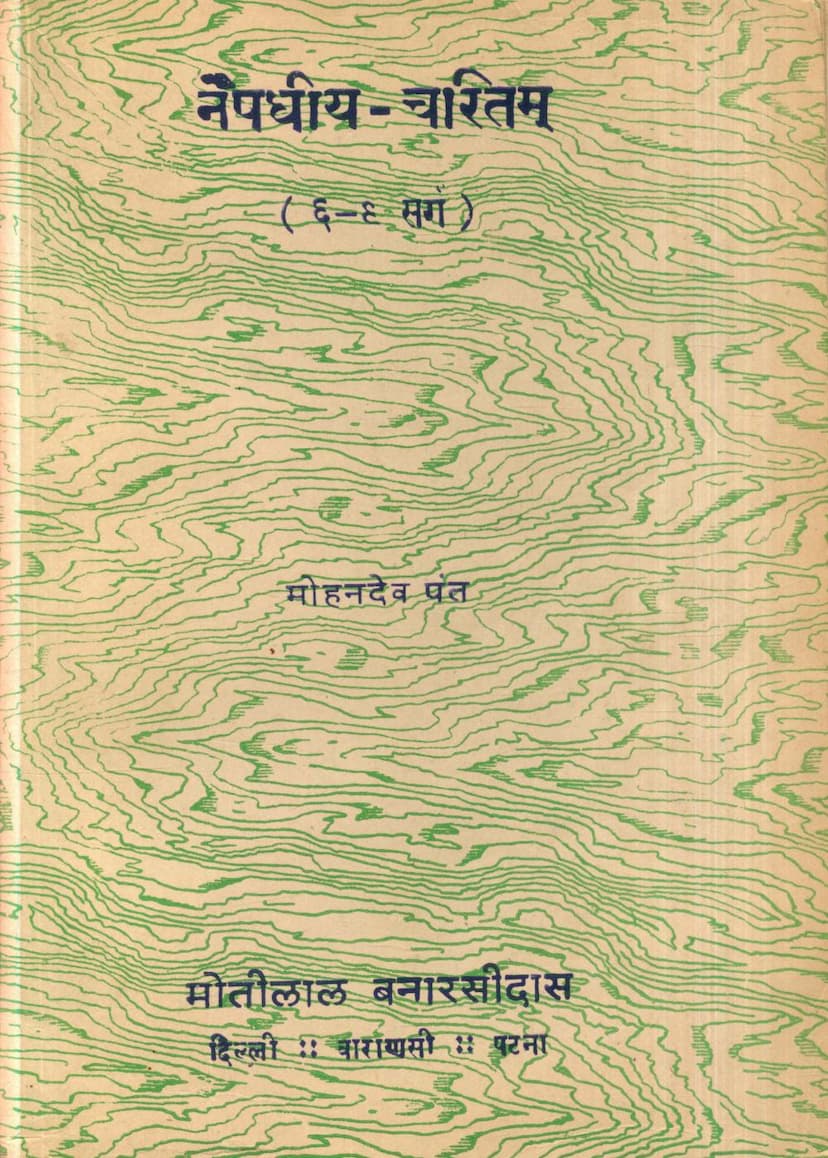Naishadhiya Charitam 03
Added to library: September 2, 2025

Summary
This is a summary of Naishadhiya Charitam Book 03 by Mohandev Pant, published by Motil Banarsidass. The provided text focuses on the sixth Canto (Sarga) of the Naishadhiya Charitam, a significant Sanskrit epic poem by Sri Harsha.
Here's a breakdown of the content and its key themes as presented in the provided pages:
Publisher and Edition Information:
- Publisher: Motilal Banarsidass, Delhi, Patna, Varanasi.
- Edition Details: This volume covers Cantos VI to IX.
- Author/Commentator: Sri Mohandev Pant is identified as the commentator and translator into Hindi.
- Other Contributors: Sri Mohandev Pant is also credited with providing detailed notes and a preface.
- Publication Details: First edition, Varanasi, 1979. Price: Rs. 18.00.
Summary of the Sixth Canto (Sarga) - Key Events and Themes:
The sixth canto details the journey and arrival of King Nala in Kundinapura, the capital of Vidarbha, as an envoy of Lord Indra. The narrative unfolds with Nala's mission and his internal thoughts and emotions related to his beloved Damayanti.
Key Points from the Canto:
-
Nala's Mission as Indra's Envoy: The canto begins with Nala undertaking a mission as a messenger for Indra, the king of the gods. This signifies the divine involvement in the unfolding events.
-
Nala's Internal Conflict: Despite being on a mission for the gods, Nala is deeply in love with Damayanti. His journey to Kundinapura is fraught with this internal conflict. He is torn between his duty as a messenger and his personal longing for Damayanti.
-
Arrival in Kundinapura: Nala arrives in the city of Kundinapura. The text describes his arrival, his observations of the city, and his interaction with its inhabitants.
-
Devotional Reverence and His Own Devotion: The narrative highlights Nala's dedication to his mission and his strong resolve, even while his heart is consumed by thoughts of Damayanti. He compares his devotion to his duty with the dedication of sages and deities.
-
Sensory Descriptions and Poetic Flourishes: The canto is rich with detailed descriptions of Damayanti's beauty and Nala's emotional state. The poet uses various figures of speech and poetic devices (like metaphors, similes, and alliteration) to enhance the narrative and evoke emotions. Examples include:
- Metaphors: Damayanti's beauty is compared to various elements of nature, such as the moon, lotuses, and jewels.
- Alliteration: The text frequently employs alliteration (vrityanupras) for a pleasing auditory effect.
- Internal Monologue: Nala's inner thoughts and turmoil are explored, offering insights into his character and his love for Damayanti.
-
Illustrative Comparisons: Nala's predicament and devotion are often illustrated through comparisons with mythological figures and events, such as Agastya drinking the ocean or the celestial beings eagerly awaiting news.
-
Focus on Damayanti's Beauty and Nala's Yearning: The descriptions of Damayanti's physical attributes are detailed and elaborate, emphasizing her captivating charm and the intense longing she evokes in Nala.
-
The Role of the Senses: The canto highlights how Nala's senses are overwhelmed by the overwhelming beauty of Damayanti's city and, by extension, her presence, even though he has not yet met her directly in this context.
-
Concluding Remarks on the Canto: The commentary by Mohandev Pant often analyzes the poetic devices, the philosophical underpinnings, and the emotional impact of the verses, providing explanations for the allegorical meanings and the author's intent.
In essence, the sixth canto sets the stage for the reunion of Nala and Damayanti by detailing Nala's arrival in Kundinapura, the challenges he faces, and the deep emotional currents that drive his actions, all presented with a high degree of poetic artistry and philosophical reflection.